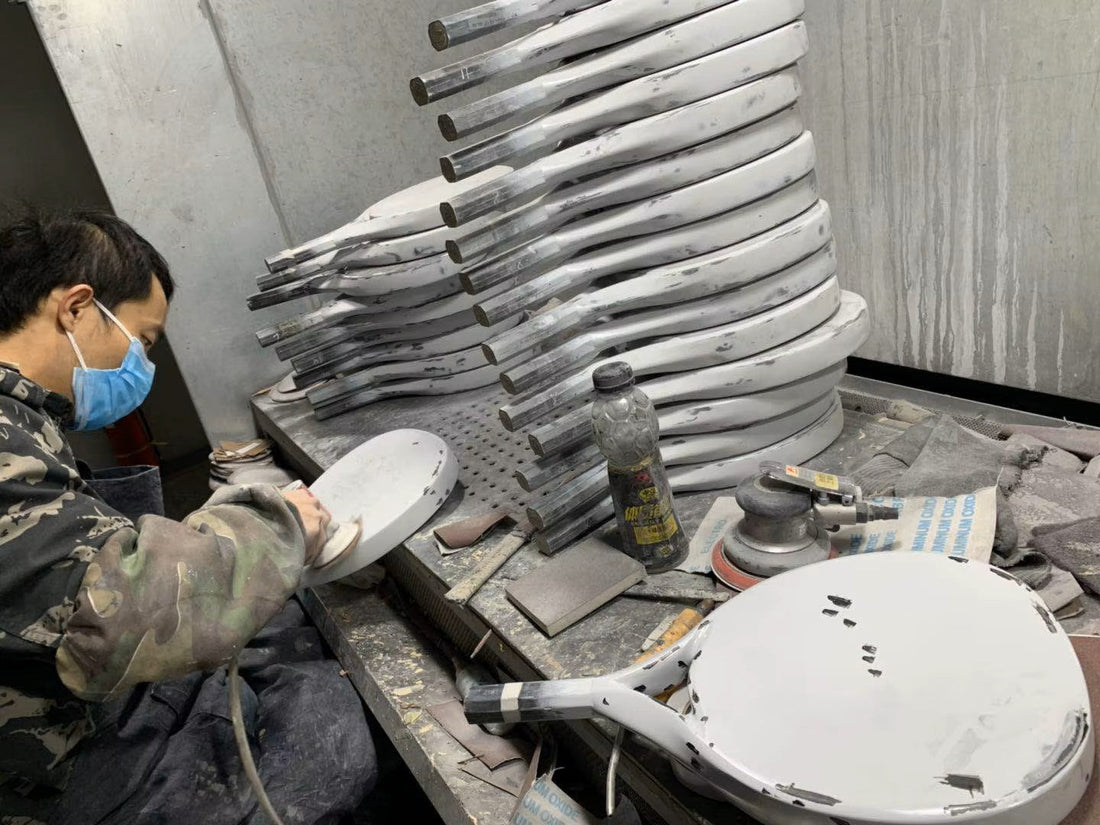
Old manufacturing methods are holding back sustainable padel rackets
Mikkel Kaae JacobsenShare
THE HIDDEN WASTE BEHIND TRADITIONAL PADEL RACKETS
Most padel rackets today are made using outdated, wasteful processes — and it shows. Nearly 45% of high-cost carbon fiber is wasted during production, over 40% of rackets fail internal or external quality checks, and producing a single racket still takes more than 33 hours — almost entirely by hand.
True sustainability isn't just about materials. It's about how a racket is made, and traditional processes make it nearly impossible to build a truly sustainable padel racket.
Even after major optimization efforts, traditional production methods remain slow, wasteful, and inconsistent. If the sport is going to keep growing, the way padel rackets are made has to evolve.
WHY CURRENT MANUFACTURING CAN'T DELIVER SUSTAINABLE PADEL RACKETS
Padel is booming worldwide, but behind the explosive growth lies a harsh reality: manufacturing is still highly inefficient, manual, and environmentally costly.
A recent academic study, "Enhancing process performance for composite padel racket manufacture using Six Sigma-DMAIC and VSM synergetic support," revealed serious inefficiencies:
MASSIVE MATERIAL WASTE
Nearly 45% of high-cost carbon fiber prepreg was wasted, driving up costs and leaving a heavy environmental footprint — a major obstacle to building sustainable padel rackets.
HIGH DEFECT AND REJECTION RATES
Internal rejection rate: 36% of rackets scrapped due to defects like porosity, poor bonding, and cosmetic flaws. External rejection rate: 8% of rackets failed shortly after reaching players. Lost trust. More waste.
In simple terms: over 40% of rackets didn’t survive quality control or real-world use.
SLOW, MANUAL PRODUCTION
Producing a single racket took 33.6 working hours. Every step — cutting, sanding, varnishing — was manual. This inconsistency undermines both quality and sustainability.
WASTE AT EVERY STAGE
Beyond carbon fiber loss, foam cores showed a 27% waste rate, and epoxy resin wasted another 30%.
These numbers highlight a simple truth: you can't build a sustainable padel racket with manufacturing methods this inefficient.
WHAT A FUTURE-FRIENDLY MANUFACTURING PROCESS LOOKS LIKE
Even after full Six Sigma and Lean optimization, traditional factories only reduced waste slightly. Material waste dropped but still stood at 24%, with combined rejection rates hovering around 12.3%. That's the "optimized" best case.
Most manufacturers haven't made similar investments — meaning most rackets today are still made wastefully, inconsistently, and unsustainably.
To create a truly sustainable padel racket, the industry must shift toward:
More automation, less manual labor: Reduces variability, improves consistency.
Smarter material use, less waste: Optimized cutting, molding, and curing.
Faster, more reliable production: Shorter cycle times, faster deliveries.
Better quality control: Eliminates defects before they reach players.
Only by rethinking manufacturing can padel move toward sustainability at scale.
HOW PERMA IS BUILDING THE NEXT GENERATION OF SUSTAINABLE PADEL RACKETS
At Perma, we're not waiting for the industry to catch up.
We're rebuilding padel racket manufacturing from the ground up — combining smarter processes, future-friendly materials, and products made to last.
Because a sustainable padel racket isn't just about how it plays today. It's about how it’s made, how long it lasts, and what happens at the end of its life.
Players deserve better. Retailers deserve better. And padel deserves gear built for the next era.
We're not just changing rackets. We're changing the game.
